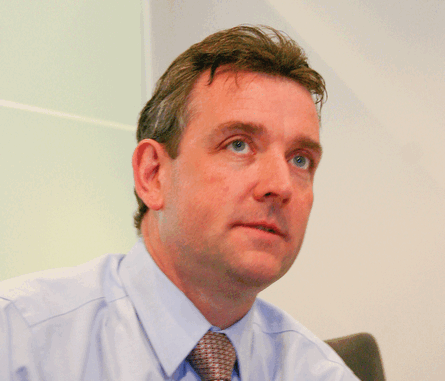Soaraway oil prices, environmental concerns and a sea change in how the world views aviation could result in a fundamental change to the way future jet engines are built, Rolls-Royce said at Farnborough.
Mark King, Rolls-Royce president, commercial engines believes the current obsession with time-on-wing could be overtaken by the power of the green debate and the relentless pursuit of greater fuel efficiency.
This viewpoint “makes a lot of sense”, said Richard Aboulafia, vice president, analysis at Washington-based consultancy Teal Group, particularly if fuel remains so costly. “It is purely a function of fuel prices. If they stay at this level it will not be a passing fad.”
The introduction of lighter, more fuel-efficient engines, which run at a higher temperature, would result in a significant trade-off in service life, and engines would need to be replaced far more frequently, says King.
He argues that airframers, airlines, engine builders and even passengers are all revising their views on the way that future aircraft might be powered. He advocates an open-minded approach.
Rolls-Royce has responded to the current “what will power the next generation of narrowbody, single-aisle airliners?” debate by coming up with what King describes as his “option 15/50 plan”. This describes what R-R is doing to address a range of game-changing percentage efficiency improvements over today’s engines from 15% to an “achievable” 50%.
 |
|---|
The company has, he says, been talking to airlines for some time – “in excess of 50 of them” – and trying to distil their thoughts into a defined series of options that have been complicated by the era of oil at around $140 a barrel.
According to Aboulafia, there is currently no question the ratio between the upfront procurement cost, operating cost (essentially fuel) and the maintenance cost of an aircraft is changing in favour of operating costs. “They are now secondary and tertiary to fuel efficiency,” he says.
While King concedes that R-R’s major competitors – GE, Pratt & Whitney and CFM – seem prepared to buy into to a particular technology solution, it doesn’t convince him to change his fundamental approach, which is “wait and see”. The current uncertainty over fuel prices and how they may influence future engine design supports his cautious viewpoint.
“We don’t even know yet whether the Boeing 737 and Airbus A320 replacements will be narrow-body, single-aisle aircraft,” he says. “So you can understand why we find it hard to be precise about answering a question that hasn’t even been asked.”
Source: Flight International























